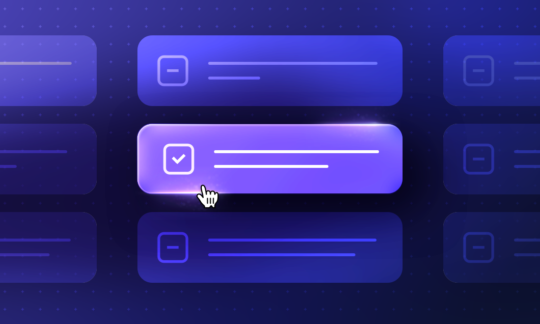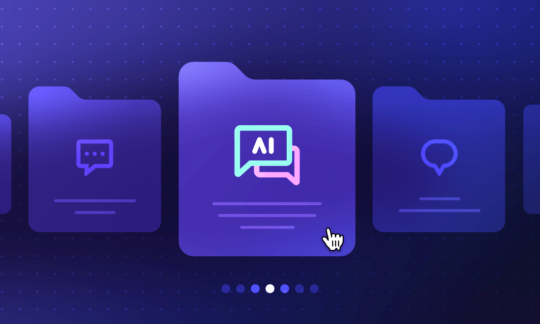How can banks use digital voice assistants to enhance their customer service
The COVID-19 lockdown has irreversibly changed our approach towards customer service automation in banking. According to McKinsey, “in the first few months of the COVID-19 pandemic, use of online and mobile banking channels across countries has increased by an estimated 20 to 50 percent”. What’s more, it is expected that this openness to new technologies will only grow after the pandemic has come to an end. Suffice it to say, if you were considering investing in an AI customer service bot, now’s the time to act!
In this article, we’re going to discuss the impact of digital voice assistants on customer experience in banking. We will also mention the top six processes you can automate with a conversational AI voicebot, and share an example of a successful implementation.
What makes voicebots a good customer service automation solution for banks?
Many customers are still cautious about sharing their sensitive data through a text chat – even if they are logged in and their connection is secure. Secondly, some people (especially older generations) might not be using online banking altogether. This leaves them with two options – either calling or visiting a branch in person.
We can also see the proportions of online vs phone queries in the build-up of Customer Support teams at banks. Many of the largest financial institutions have thousands of agents working solely on their voice channels, compared to just a handful of those assigned to in-app/chat. For these businesses, voice bots can quickly prove to be worth the investment.
Top 6 processes you can automate by using AI customer service bots
Let’s take a look at the processes you can automate with your AI digital assistant. We’ll begin with one of the most common use cases:
#1 Customer authentication
Digital banking has become the preferred way for conducting financial transactions, which has made customer authentication even more important. Customer service representatives ask security questions such as ‘what is your mother’s maiden name’ or ‘how many bank accounts do you have’ to verify callers’ identity.
Usually, this process is handled by bank personnel, however, it can be easily outsourced to a digital voice assistant. The voicebot can ask a set of questions to quickly verify the caller’s identity, while your customer service representatives can focus on other activities which cannot be automated.
#2 Call classification
Effective call classification is crucial to maintaining high customer satisfaction – few things make customers as frustrated as being transferred to a person who is unable to handle their issue. You can turn to a digital voice assistant to deal with this process. It will leverage natural language processing techniques to find out what the customer is trying to achieve.
The most advanced voice bots such as SentiOne, quickly learn new words which not only makes communication smooth but also highly efficient. Our solution picks up new words based on 4-5 provided synonyms, which guarantees accuracy as high as 96%. By understanding the user’s intent, voicebots are able to effectively classify the calls, and quickly match the callers with the right agents.
#3 Bank account management
If you use an AI customer service bot, you can train it to handle the majority of account-related requests. These include:
- Sending payments to a designated recipient (the bot can either draw the recipient’s data from the account history or ‘write’ down the details through voice-to-text dictation)
- Checking the balance of each account
- Evaluating whether the customer is eligible for a loan or mortgage (based on regular income, spending patterns, and credit history)
#4 Blocking stolen credit cards
How quickly you respond to an emergency – such as a stolen credit card – will be crucial for your brand’s reputation. If it takes too much time, the customer’s anxiety might go through the roof, leading them to share their frustration online.
Since digital voice assistants pick up as soon as you dial, they can react to time-sensitive situations within seconds. If you use a conversational voicebot, it can be trained to block cards without the help of a live agent.
#5 Outbound campaigns
Customer support aside, your digital voice assistant can also be engaged to automate marketing and sales calls. The secret to any successful outbound campaign is getting the word out about your new service to as many customers as possible. With the right digital voice assistant, you can do so at a scale unattainable for live agents.
Let’s assume you want to promote your newest savings account or share a limited deal with a group of premium account holders. Your bot will take care of dialing and presenting the offer. If the person states that they’d like to hear the details, only then will they be connected to a live sales assistant. Brilliant, right?
#6 Call intent discovery
Customer service automation can come in handy during call intent discovery. Just like with call classification, digital voice assistants can use NLP and machine learning to find out what the customer is trying to achieve, or what their intent is.
For instance, a customer might call asking how to close their bank account. The voicebot can then identify the intent as “churn” and transfer the caller to the right advisor who’ll try to learn why the customer is unhappy, and hopefully, prevent them from closing their account. Intent prediction allows customer support teams to provide clients with the help they need, which has a positive impact on their satisfaction and improves business metrics.
Think about it: when you automate parts of your customer service that don’t require human-to-human interaction, you provide your CS team with more time and emotional space to focus on value-adding activities. There are situations that a voicebot wouldn’t be able to handle, such as a customer who is experiencing serious issues with their bank account – for instance, an unauthorized transaction. These kinds of situations must be dealt with by customer service representatives, not bots.
Now that you know how big of a difference bots can make for customer experience in banking, let’s look at one such implementation in the financial sector. Here’s how debt recovery company KRUK is using SentiOne’s voicebot solution and the results they received.
Example of successful customer service automation in finance
KRUK sought a solution that would simultaneously cover communication on two touchpoints, i.e., chat and phone. As explained by the company’s telephone customer service director, “the main goals for our voicebot were customer service after working hours and providing automated service for repetitive requests”.
For this purpose, they have turned to SentiOne. After their deployment, the bots were used to handle all incoming calls, identify clients, and resolve queries related to payment deadlines or debt status. Only more complex queries were transferred to live agents.
The result? KRUK is now handling 23% of all calls without engaging human assistants and is available for calls around the clock.
Be sure to read more about our collaboration with KRUK in our dedicated case study!
Summary – choosing an AI customer service bot for banking
Providing good customer experience in banking is as important as ever – especially since many consumers prefer to manage their finances purely online, from the safety of their homes. This demands the introduction of multiple processes to guarantee safety and efficiency, which translates into more work for the banking personnel, especially customer service.
In order to give the CS team more time to focus on situations or processes which cannot be tackled with customer service automation, it’s worth investing in digital voice assistants. They’ll be able to help you handle processes like customer authentication, call intent discovery, blocking stolen cards, or bank account management.
While selecting the right solution, we recommend opting for one that offers an equally powerful chatbot and voicebot, like SentiOne does. Our voicebot solution quickly picks up new vocabulary which results in a 96% accuracy rate when it comes to understanding the caller’s intent.
If you’re interested in learning more about our platform, then get in touch and we will happily schedule a demo.



